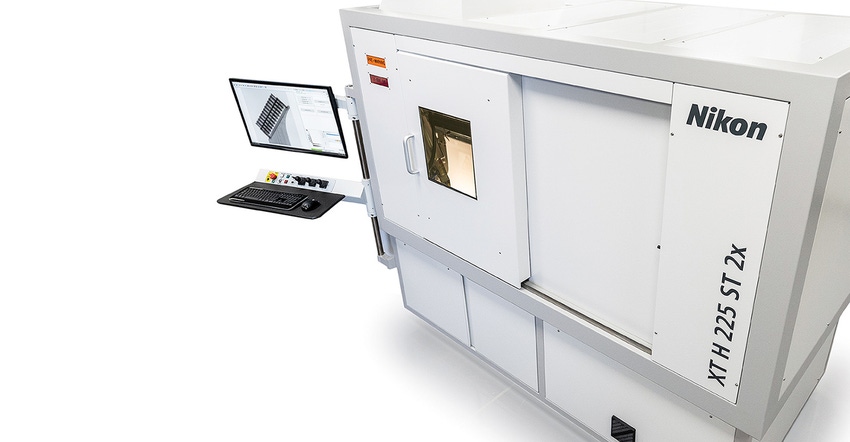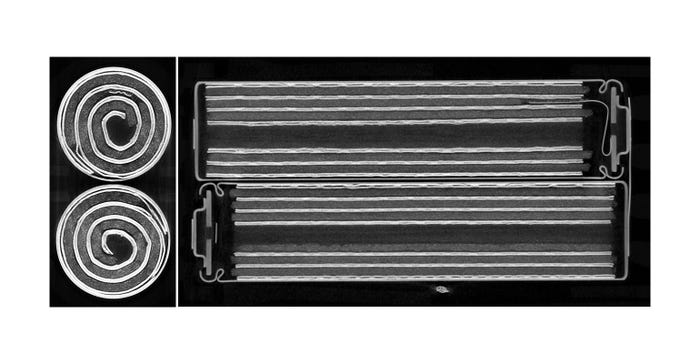Battery Inspection with X-Ray Scanning
X-ray CT scanning is replacing destructive testing methods in battery quality checks.

There are a lot of ways battery manufacture and assembly can go wrong. To assure the quality of cells, manufacturers check samples for a range of flaws regarding overhangs, porosity, contamination by foreign matter, swelling, poor welds, shorts and other issues that could lead to the battery failure or even catastrophic thermal runaway.
The challenge for the battery makers is that normally, such defects can’t be discovered without destroying the part. On top of that, the cell is a high-throughput component—it needs to be produced quickly and efficiently if the maker is going to meet his margins. But to do a traditional quality check, a cell needs to be taken off of the production line and into a test lab, where it’s taken apart, examined under a microscope and had numerous tests run on it—all of which takes time.
The good news is that using a smart X-ray CT (computer tomography) scanning system, the cell can be checked for all of those defects non-destructively and in about a minute—and in the best cases, it can be done in-line, on the production floor.
That’s according to Bryan Richar, Nikon Metrology’s business development manager for CT/X-ray systems.
“These inspections can be done in-line,” Richar said. “Our XT H 225 ST 2x system, for example, is made for a production environment. In-line, it can be integrated with robots or cobots. It also has an auto-loader option and a couple of different automated options.”

Watt limits
Scanning instead of dismantling offers a clear advantage in preventing material waste, but the usual X-ray CT scanning approach is still too slow to be an optimal solution, according to Richar.
“It's a very time-consuming process,” he said. “Some systems can take hours for a scan.”
In a standard system, an electron beam hits the source, which produces X-ray photons. “But it's a very inefficient process,” he explained. “As 99% of that reaction is simply heat—and only 1% is X-ray. The kneejerk solution would be to up the wattage—generate more electrons to produce more photons. But there’s a limit. Too many will overheat that static target and defocus the image.” In those systems, a cooling down period is needed, slowing the procedure.
Rotating the target
The Nikon solution gets around the issue by using a rotating target technology. The unique 225kV rotating target allows continuous operation across its power range up to 450W with no need to cool down. According to company literature, the liquid-cooled, rotating target efficiently disperses the heat generated as the electron beam hits the surface to generate X-ray photons, boosting the flux by up to five times, enabling up to three times higher resolution for the same power, or allowing data to be collected three to five times faster for the same resolution.
“With our rotating target system, the target is cooled and we can therefor increase the Wattage without overheating and defocusing the image,” Richar explained. “Instead of, say, 10 to 17 W, we're able to do 30 to 50 W and get the same quality image—and sometimes a better image—in a shorter period of time. In fact, we have EV-manufacturer customers who are running these scans 24/7.”
Editor’s note: To learn more about using X-ray CT scanning technology for battery inspection, register for Battery Technology’s October 19 Webinar: “Advanced X-Ray CT Technology for Breakthrough Shop-Floor Quality Control,” sponsored by Nikon. Details and registration page are here.
About the Author(s)
You May Also Like





